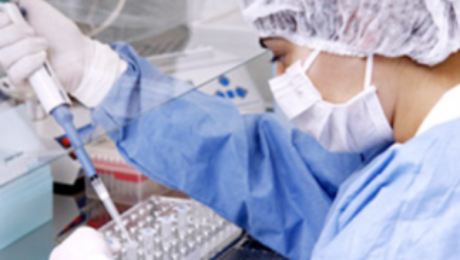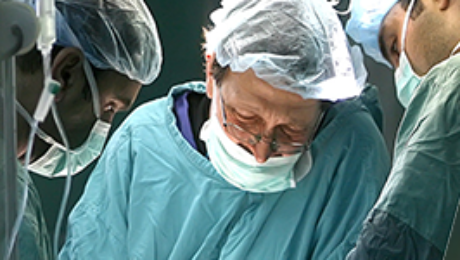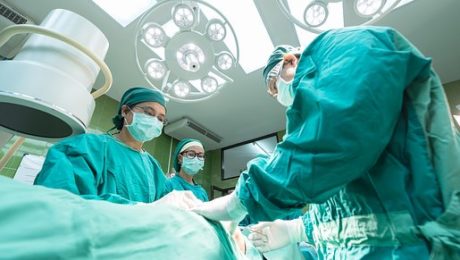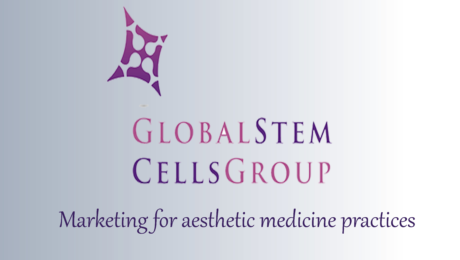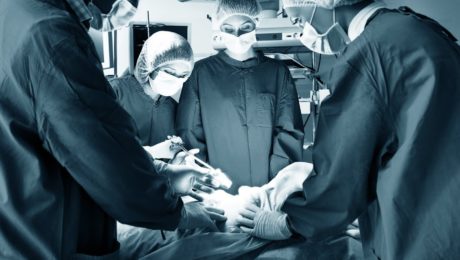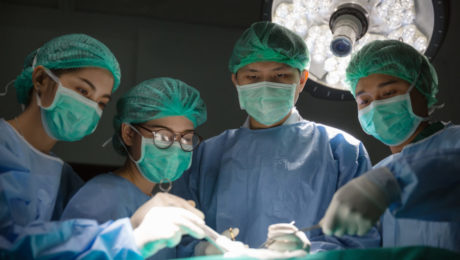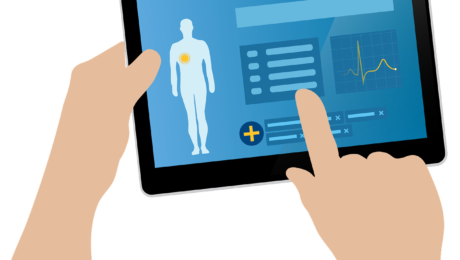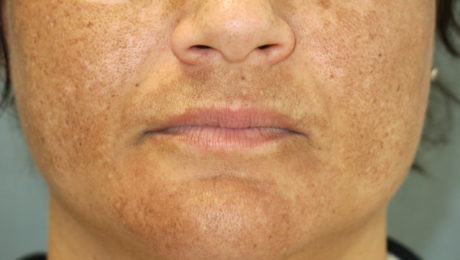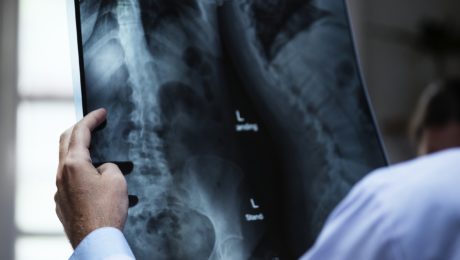ISSCA to conduct second stem cell certification training course in Lima, Peru
ISSCA to conduct a second hands-on regenerative medicine certification training course in Lima, Peru, Peru August 31, 2018.
MIAMI, June 7, 2018—In response to the success of a recent stem cell certification course in Lima, Peru, the International Society for Stem Cell Application (ISSCA) has announced plans to hold a second stem cell certification training course for qualified physicians in Lima on August 31, 2018.
ISSCA, the only stem cells organization able to travel around the world to teach stem cell harvesting protocols to physicians, conducted the first course in Lima in May. Eight Peruvian physicians were provided highly personalized, hands-on training in harvesting and isolating adipose- and bone marrow-derived stem cells from four live patients under the guidance of stem cell training experts.
Each participating physician obtains the intellectual property of 22 proprietary protocols that will them to treat degenerative and aesthetic diseases and conditions in their offices. Step-by-step videos of each protocol are provided to physicians for later referral.
Participating physicians acquire the skills necessary to offer an alternative therapy to patients with medical conditions for which no solution is currently available. ISSCA’s stem cell training course allows qualified physicians who earn certification to offer sought-after alternative treatments.
Successful completion of the ISSCA regenerative medicine certification course allows physicians to join a select group of practitioners at the forefront of medical science. Only 5 percent of physicians worldwide access to stem cell therapy studies, and so far only 0.01 percent are practicing these therapies.
The course also provides participating physicians with access to ISSCA’s online stem cell training course to review all content and procedures introduced during the two-day clinical training course, as well as patient forms and guidelines, procedures, informed consent forms, didactic lectures, training booklets, and more,
The ISSCA’s regenerative medicine protocols training course was developed for physicians and high-level practitioners to learn techniques in harvesting and reintegrating stem cells derived from patients’ adipose tissue and bone marrow.
Seating is limited to eight participants. Register today at the Lima Peru course website to secure a seat, email info@stemcellsgroup.com, or call 305-560-5337.
About ISSCA:
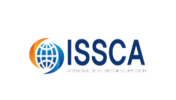
The International Society for Stem Cell Application (ISSCA) is a multidisciplinary community of scientists and physicians, all of whom aspire to treat diseases and lessen human suffering through advances in science, technology and the practice of regenerative medicine. ISSCA serves its members through advancements made in the specialty of regenerative medicine.
The ISSCA’s vision is to take a leadership position in promoting excellence and setting standards in the regenerative medicine fields of publication, research, education, training, and certification.
As a medical specialty, regenerative medicine standards and certifications are essential, which is why ISSCA offers certification training in cities all over the world. The goal is to encourage more physicians to practice regenerative medicine and make it available to benefit patients both nationally and globally. Incorporated under the Republic of Korea as a non-profit entity, the ISSCA is focused on promoting excellence and standards in the field of regenerative medicine.
Stem cell training Lima Peru
- Published in Press Releases
ISSCA to conduct regenerative medicine training course in 3 international cities
ISSCA to conduct hands-on regenerative medicine certification training courses in Mexico City, Bogota, Colombia, and Quito, Ecuador in June 2018.
MIAMI, June 7, 2018—The International Society for Stem Cell Application (ISSCA), the only stem cells organization able to travel around the world to teach stem cell harvesting protocols to physicians, has announced plans to conduct an intensive, hands-on, two-day regenerative medicine certification training course for physicians in three international cities:
Bogota, Colombia: June 8 – 9, 2018.
Quito, Ecuador: June 15 – 16, 2018
Mexico City: June 29 – 30, 2018
Participating physicians will benefit from 20 years of research and development consolidated into the 2-day, intensive, hands-on course. Participants receive highly personalized training on how to harvest and isolate adipose and bone marrow stem cells from live patients under the direction of stem cell training experts. These protocols are important tools for treating patients with degenerative illnesses.
The course also provides participating physicians with access to ISSCA’s online stem cell training course to review all content and procedures introduced during the two-day clinical training course, as well as patient forms and guidelines, procedures, informed consent forms, didactic lectures, training booklets, and more.
The ISSCA’s regenerative medicine protocols training course was developed for physicians and high-level practitioners to learn techniques in harvesting and reintegrating stem cells derived from patients’ adipose tissue and bone marrow.
Seating for all three city’s training courses is limited to eight physicians. Register today at Bogota, Colombia course, Quito, Ecuador course, or Mexico City course, email info@stemcellsgroup.com, or call 305-560-5337.
About ISSCA:

The International Society for Stem Cell Application (ISSCA) is a multidisciplinary community of scientists and physicians, all of whom aspire to treat diseases and lessen human suffering through advances in science, technology and the practice of regenerative medicine. ISSCA serves its members through advancements made in the specialty of regenerative medicine.
The ISSCA’s vision is to take a leadership position in promoting excellence and setting standards in the regenerative medicine fields of publication, research, education, training, and certification.
As a medical specialty, regenerative medicine standards and certifications are essential, which is why ISSCA offers certification training in cities all over the world. The goal is to encourage more physicians to practice regenerative medicine and make it available to benefit patients both nationally and globally. Incorporated under the Republic of Korea as a non-profit entity, the ISSCA is focused on promoting excellence and standards in the field of regenerative medicine.
- Published in Press Releases
ISSCA to conduct hands-on regenerative medicine training course at its Abu Dhabi Stem Cell Center
ISSCA will conduct a hands-on regenerative medicine certification training course for physicians at its Stem Cell Center in Abu Dhabi July 8, 2018.
MIAMI, June 7, 2018—In an effort to consolidate its presence in the Middle East and focus on providing the best instruction to new regenerative medicine practitioners, the International Society for Stem Cell Application (ISSCA) has announced plans to conduct a hands-on regenerative medicine certification training course for physicians at its Stem Cell Center in Abu Dhabi July 8, 2018.
The intensive, hands-on training course teaches participating physicians how to harvest stem cells from adipose and bone marrow tissue. Qualified physicians will learn as they conduct regenerative medicine protocols on live patients under the direction of stem cell training experts. Skills learned in the training course can be used in the physician’s practice to treat patients and for career advancement opportunities.
The course also provides participating physicians with access to ISSCA’s online stem cell training course to review all content and procedures introduced during the two-day clinical training course, as well as patient forms and guidelines, procedures, informed consent forms, didactic lectures, training booklets, and more.
The ISSCA’s regenerative medicine protocols training course was developed for physicians and high-level practitioners to learn techniques in harvesting and reintegrating stem cells derived from patients’ adipose tissue and bone marrow.
The July 8, 2018, regenerative medicine training course will be held at the ISSCA Stem Cell Center in Abu Dhabi.
Seating for this training course is limited. Register today to participate by visiting the Stem Cell Training Abu Dhabi website, email info@stemcellsgroup.com, or call 305-560-5337.
About ISSCA:

The International Society for Stem Cell Application (ISSCA) is a multidisciplinary community of scientists and physicians, all of whom aspire to treat diseases and lessen human suffering through advances in science, technology and the practice of regenerative medicine. ISSCA serves its members through advancements made to the specialty of regenerative medicine.
The ISSCA’s vision is to take a leadership position in promoting excellence and setting standards in the regenerative medicine fields of publication, research, education, training, and certification.
As a medical specialty, regenerative medicine standards and certifications are essential, which is why ISSCA offers certification training in cities all over the world. The goal is to encourage more physicians to practice regenerative medicine and make it available to benefit patients both nationally and globally. Incorporated under the Republic of Korea as a non-profit entity, the ISSCA is focused on promoting excellence and standards in the field of regenerative medicine.
Stem cell training Abu Dhabi
- Published in Press Releases
Platelet-Rich Plasma Stays Quietly Popular Despite Neglect
Fact: PRP Treatments Are Highly In-Demand
According to research, PRP treatments are one of the most in-demand treatments available in healthcare. This is impressive considering the following challenges PRP faces:
- Lack of Support from the Medical Industry: PRP is not backed by big pharma, meaning no extensive research or marketing is funded.
- Absence of Lobbying by Medical Associations: There are no medical associations working to increase awareness of PRP.
- No Insurance Reimbursements: Insurance companies do not reimburse PRP treatments, making it difficult to get patients to pay for a treatment that is relatively “unproven.”
- Rising Costs: In 2006, a PRP treatment cost $450. Today, it costs $800, with the cheapest being $650.
Despite these obstacles, the demand for PRP treatments remains robust.
The Future of PRP
We believe the best of PRP is yet to come. A breakthrough study could propel PRP into mainstream hospitals and clinics. The most significant growth in PRP is currently happening in Asia, rooted in fundamental healing theory.
The Healing Power of PRP
The growth of PRP can be attributed to its fundamental healing properties:
- Increased Platelets: More platelets mean more growth factors and cytokines, leading to enhanced healing.
- Natural Healing Mechanism: Our body’s natural healing mechanism operates with 150,000/ul-350,000/ul platelets in blood. Using PRP amplifies this number by 3X to 5X, translating to better healing.
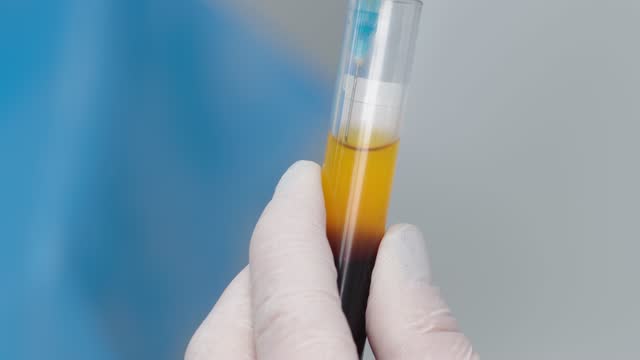
Platelet-Rich Plasma Trends
PRP can be used to promote the healing of injured tendons, ligaments, muscles, and joints, and is applied to various musculoskeletal problems. Regular studies test its effectiveness. One landmark study involved double-blind randomized controlled trials to see the effect of PRP on patients with chronic low back pain caused by torn discs. The study found that 60% of the patients felt significant improvements, with some even being cured.
Platelet-Rich Plasma Variants
There are several types of PRP variants:
- Plasma Rich in Growth Factors (PRGF)
- Plasma Rich in Platelets and Growth Factors (PRPGF)
- Platelet-Rich Plasma (PRP)
- Platelet Poor Plasma (PPP)
- Plasma Rich in Platelets and Rich in Leukocytes (LR-PRP)
- Plasma Rich in Platelets and Poor in Leukocytes (LP-PRP)
- Platelet-Rich Fibrin Matrix (PRFM)
All of them involve plasmapheresis—the two-stage centrifugation process to separate platelets from blood. The industry has yet to standardize which variant to use, but we believe the confusion will clear up in 3-5 years.
Bio-Factors at Play in PRP
Regardless of the PRP variant used, the following bio-factors are at play:
- Growth Factors: TGF-B, PDGF, IGF-I,II, FGF, EGF, VEGF, ECGF
- Adhesive Proteins: Fibrinogen, Fibronectin, Vitronectin, Thrombospondin-1
- Clotting & Anti-Clotting Factors: Proteins, Antithrombin, Plasminogen, Proteases, Antiproteases
How Platelet-Rich Plasma Actually Works
PRP is commonly used for wound healing and pain management because platelets aid coagulation, act as a biological glue, and support stem or primary cell migration. They also help restore hyaluronic acid, accelerate collagen synthesis, and increase cartilage matrix.
Platelets delivered in a clot can immediately act as a scaffold to enable the healing process. 95% of bio-active proteins are released within 1 hour of injecting PRP, and platelets continue to release growth factors for 7-10 days. Thus, it’s recommended to re-inject PRP every 7 days.
Why Patients Choose PRP Despite the Cost
Patients are willing to pay out of pocket for PRP treatments despite insurance companies not covering it because:
- Effectiveness: The treatment works.
- Natural and Side-Effect-Free: There is nothing else as natural and side-effect-free as PRP.
PRP for Osteoarthritis
Consider osteoarthritis, which affects 27 million Americans. When doctors started doing PRP treatments for their osteoarthritis patients, a large majority experienced no further cartilage loss. This suggests PRP should be the default first-line treatment for osteoarthritis across the country.
PRP for Hair Loss and Cosmetic Applications
PRP also has significant potential in treating hair loss and cosmetic facial applications. Studies have shown reduced hair loss and increased hair density, with patients expressing high satisfaction levels.
The Growing PRP Market
The PRP market is expected to hit $126 million in 2016, a 180% increase over the 2009 figure of $45 million. For osteoarthritis alone, if all 27 million Americans received 1 PRP shot a year at a conservative $400 per treatment, it would be a $10 billion market.
PRP for Tennis Elbow
PRP is also known to work well for Tennis Elbow, which affects 1% to 3% of the overall population and up to 50% of tennis players.
Insurance Coverage for PRP
Getting PRP covered by insurance could significantly expand the market and help heal millions of patients more naturally and effectively. It could also save insurance companies money by reducing the need for more expensive interventions like surgery.
Challenges and the Future of PRP
The vast scope of PRP treatment calls for urgent structure and guidelines. There are some 20+ conditions where researchers have found it helpful. Proving its efficiency in all these areas is a daunting task, but we will get there with enough funding and standardized procedures.
Conclusion
Despite being classified as “unproven,” PRP has vast potential. With the right number of platelets, platelet activation, and cytokine release, PRP can consistently deliver positive outcomes. Although there is still uncertainty over the number of injections, timing, and delivery method, widespread adoption will eventually lead to a more structured approach.
Let’s hope the first glimpses of this structure will arrive soon. In 2015, the world saw approximately 1 million knee arthroplasties for osteoarthritis, costing $25 billion. How many of these patients could have benefited from PRP early on?
- Published in Corporate News / Blog
Global Stem Cells Group Announces the First International Meeting on Marketing in Aesthetic Medicine
Global Stem Cells Group announces the first international meeting on marketing in aesthetic medicine August 24, 2018 in Buenos Aires, Argentina.
MIAMI, April 19, 2018—Global Stem Cells Group founder Benito Novas announces the first international meeting on marketing in aesthetic medicine, to be held at the Medicine Faculty of Universidad de Buenos Aires August 24, 2018.

Novas, a global entrepreneur and medical marketing strategist in the fields of biotechnology, life sciences, and healthcare development, will lead a team of experts who will share strategies for marketing an aesthetic medicine practice.
The meeting agenda will provide attendees with tools and insights for promoting their practices, with topics including:
- How to manage social media to recruit more patients
- How to use Instagram and email marketing
- How to use content marketing to attract target audiences
- Promoting an aesthetic clinic in the digital era
- Influencer marketing
Novas, CEO of Global Stem Cells Group and Aesthetic Marketing Group, will be the event’s keynote speaker. He will share his expertise in digital marketing, the latest marketing tools for managing an aesthetic medicine practice, and other strategies for promoting physician practices.
“Consumers spend at least three hours per day on social media sites, which makes social media a valuable tool for attracting patients,” Novas says. “Physicians and medical practice administrators who participate in this meeting can learn how to leverage the power of online resources like Twitter, Facebook, and Instagram to reach target audiences, increase leads, and effectively recruit new patients.
Attendees will also learn about consumer behavior patterns in their search for products and services in the digital age. Most potential patients search Google to find an aesthetic medicine practice that offers the products and procedures they are looking for.
Content marketing and other strategies presented at this meeting will help aesthetic practices maximize opportunities to attract potential patients by enhancing online visibility and increasing engagement with target audiences.
Additional speakers will include:
- Hector Portilla, communications and advertising specialist and director of Medestica Digital Portal, who will discuss marketing strategies
for the development of cosmetic and aesthetic medicine centers - Tamara Paez, Espana, business consultant and author of Marketing Digital en su clinica Estetica (co-authored by Novas)
- Andrea Lapeire, plastic surgeon, Argentina
- Dario Parada, owner, and founder of Grupo NOTO S.A., Argentina
- Alex Novas, Chief Marketing Officer, Global Stem Cells Group U.S.
To learn more about attending Global Stem Cells Group’s first international meeting on marketing in aesthetic medicine email info@stemcellsgroup.com, or send a text via WhatsApp to +1 786 238 2170
About Global Stem Cells Group:
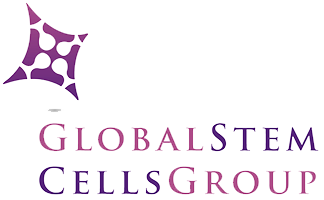 Global Stem Cells Group (GSCG) is a worldwide network that combines seven major medical corporations, each focused on furthering scientific and technological advancements to lead cutting-edge stem cell development, treatments, and training. The united efforts of GSCG’s affiliate companies provide medical practitioners with a one-stop hub for stem cell solutions that adhere to the highest medical standards.
Global Stem Cells Group (GSCG) is a worldwide network that combines seven major medical corporations, each focused on furthering scientific and technological advancements to lead cutting-edge stem cell development, treatments, and training. The united efforts of GSCG’s affiliate companies provide medical practitioners with a one-stop hub for stem cell solutions that adhere to the highest medical standards.
Global stem cell’s mission is to be the largest recognized stem cell and regenerative medicine network in the world.
Marketing for aesthetic medicine practices
- Published in Press Releases
Stem Cell Training Signs Agreement to Provide Onsite Regenerative Medicine Training Worldwide
Global Stem Cells Group affiliate Stem Cell Training announces an agreement to provide its Onsite Regenerative Medicine Training at four medical practices in the U.S. and abroad.
MIAMI, April 19, 2018—Stem Cell Training, Inc., an affiliate of Global Stem Cells Group, has signed an agreement to provide its Onsite Regenerative Medicine Training. tailored to meet each individual practice’s requirements. at four medical practices in the U.S. and abroad.
The first onsite training program took place in Arizona earlier this month. The second was held at a private practice in Tampa, Florida April 19 and 20th. The third onsite training will be held at Dream Health & Beauty, a California aesthetics practice April 10-11, 2018, and the fourth onsite training will take place at Livali Pharmaceuticals, United Arab Emirates May 7-8, 2018.
Onsite Regenerative Medicine Training provides private medical practices with an opportunity to take advantage of Stem Cell Training’s highly qualified instructors and protocols to tailor stem cell training to their team’s individual needs. Onsite Training brings the coursework to individual facilities anywhere in the world for personalized, hands-on training in the latest stem cell procedures and protocols.
Participating medical practices receive the following benefits:
- Stem Cell Training’s state-of-the-art regenerative medicine training sessions brought to the facility, saving practices time and money.
- Access to SCT’s online resources, personalized theoretical information, and hands-on training as well as ongoing support for each clinical practice.
- Stem Cell applications and protocols presented to each practice team by an SCT faculty member with extensive experience in laboratory and clinical practice.
- The opportunity to offset registration fees by using the practice’s eligible patients to receive stem cell treatment during the workshop.
Onsite Stem Cell Training program specifications:
- The OSCT team of professionals delivers and sets up all necessary equipment and supplies for the training session to take place and leaves the participating practice team fully qualified to take on its own stem cell treatment practice.
- The OSCT course takes a highly visual and interactive approach, utilizing its expert trainers to teach and supervise the hands-on process on live patients and using different protocols for the extraction, isolation, and application of PRP, adipose, and bone marrow stem cells.
- OSCT provides access to high-resolution, step-by-step videos of procedures for participating practice teams’ future use and reference as well as access to ongoing online and telephone support for clinical and equipment inquiries or concerns.
Stem Cell Training’s Onsite Regenerative Medicine training is fully customized to address specific client needs and medical practice focus. The OSCT team helps physicians and their teams set up their medical facilities to become successful regenerative medicine practices.
To learn more about Stem Cell Training’s Onsite Regenerative Medicine Training, visit the Stem Cell Training Onsite Training website, email info@stemcellsgroup.com or call +1 305 560 5337.
About Stem Cell Training, Inc.:
 Stem Cell Training, Inc. is a multi-disciplinary company offering coursework and training in 35 cities worldwide. The coursework offered focuses on minimally invasive techniques for harvesting stem cells from adipose tissue, bone marrow, and platelet-rich plasma. By equipping physicians with these techniques, the goal is to enable them to return to their practices, better able to apply these techniques in patient treatments.
Stem Cell Training, Inc. is a multi-disciplinary company offering coursework and training in 35 cities worldwide. The coursework offered focuses on minimally invasive techniques for harvesting stem cells from adipose tissue, bone marrow, and platelet-rich plasma. By equipping physicians with these techniques, the goal is to enable them to return to their practices, better able to apply these techniques in patient treatments.
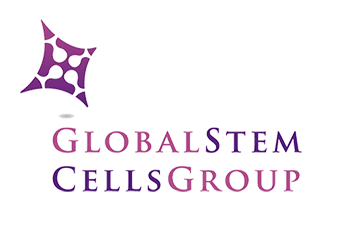
About Global Stem Cells Group:
Global Stem Cells Group (GSCG) is a worldwide network that combines seven major medical corporations, each focused on furthering scientific and technological advancements to lead cutting-edge stem cell development, treatments, and training. The united efforts of GSCG’s affiliate companies provide medical practitioners with a one-stop hub for stem cell solutions that adhere to the highest medical standards.
Global stem cell’s mission is to be the largest recognized stem cell and regenerative medicine network in the world.
online stem cell training
- Published in Press Releases
ISSCA to Host Stem Cell Training Certification Course August 25-26, 2018 in Buenos Aires, Argentina
ISSCA will conduct the next hands-on regenerative medicine certification training course for physicians in Buenos Aires, Argentina, August 25-26. 2018.
MIAMI, April 19, 2018—Following the success of its stem cell training course in Buenos Aires April 6-7, the International Society for Stem Cell Application (ISSCA) has announced plans to host the next hands-on regenerative medicine certification training course for physicians in Buenos Aires August 25-26, 2018.
Eight physicians participated in the April training course, earning certification for harvesting and implanting adipose and bone marrow stem cells in a clinical setting to treat a variety of diseases and conditions including arthritis and osteoarthritis.
Participants learn while they conduct regenerative medicine protocols on live patients under the direction of stem cell training experts. Skills learned in the training course can be used in the physician’s practice for medical and aesthetic treatments and help physicians looking for career advancement opportunities.
Argentinian sports medicine specialist, Damian Ariel Siano M.D., spoke about the benefits of stem cell certification during the training session.
“Now I can offer all my patients a non-surgical option that allows them to avoid surgery for procedures like knee and hip replacement,” Siano says. “For professional athletes, this procedure provides faster recovery and less downtime following the procedure.”
The course also provides participating physicians with access to ISSCA’s online stem cell training course to review all content and procedures introduced during the two-day clinical training course, as well as patient forms and guidelines, procedures, informed consent forms, didactic lectures, training booklets, and more.
The ISSCA’s regenerative medicine protocols training course was developed for physicians and high-level practitioners to learn techniques in harvesting and reintegrating stem cells derived from patients’ adipose tissue and bone marrow.
Stem cell therapies continue to revolutionize the medical industry and help improve the quality of life for patients suffering from sports injuries, age-related conditions, and other chronic ailments.
The August 25-26. 2018 training course will be held at the Medicine Faculty of Universidad de Buenos Aires.
Seating for this training course is limited. Register today to participate by visiting the Stem Cell Training Buenos Aires website, email info@stemcellsgroup.com, or call 305-560-5337.
About ISSCA:
 The International Society for Stem Cell Application (ISSCA) is a multidisciplinary community of scientists and physicians, all of whom aspire to treat diseases and lessen human suffering through advances in science, technology and the practice of regenerative medicine. ISSCA serves its members through advancements made to the specialty of regenerative medicine.
The International Society for Stem Cell Application (ISSCA) is a multidisciplinary community of scientists and physicians, all of whom aspire to treat diseases and lessen human suffering through advances in science, technology and the practice of regenerative medicine. ISSCA serves its members through advancements made to the specialty of regenerative medicine.
The ISSCA’s vision is to take a leadership position in promoting excellence and setting standards in the regenerative medicine fields of publication, research, education, training, and certification.
As a medical specialty, regenerative medicine standards and certifications are essential, which is why ISSCA offers certification training in cities all over the world. The goal is to encourage more physicians to practice regenerative medicine and make it available to benefit patients both nationally and globally. Incorporated under the Republic of Korea as a non-profit entity, the ISSCA is focused on promoting excellence and standards in the field of regenerative medicine.
Stem cell training certification Buenos Aires
- Published in Press Releases
Platelet-Rich Plasma Injections: Protocol Guide
Almost all sports medicine doctors agree that there’s no harm in trying Platelet Rich Plasma Injections (PRP Injections) for their patients. After all, there are hundreds of thousands of cases with positive results. All it needs is research to prove its worth. Currently, many independent researches are ongoing, funded privately, like the one conducted by Dr. Kimberly G. Harmon M.D., director of the Primary Care Sports Medicine fellowship at the University of Washington. She recently received a gift to support her research from UW alumni who firmly believe in Platelet-Rich Plasma (PRP).
While the process of extracting PRP is fairly simple—there are many variants as long as platelets are above baseline levels with at least seven growth factors—many physicians are still unsure about what they can and can’t do when it comes to this marvelous procedure. Today, let’s shed light on the fine print.
Platelet-Rich Plasma Injections Protocol
Protocol/Technique
Usually, the procedure requires the physician/surgeon and an assistant or two to help with the preparation of the graft, maintenance of sterile technique, and saving the ultrasound images (if relevant).
Pre-Procedure Considerations
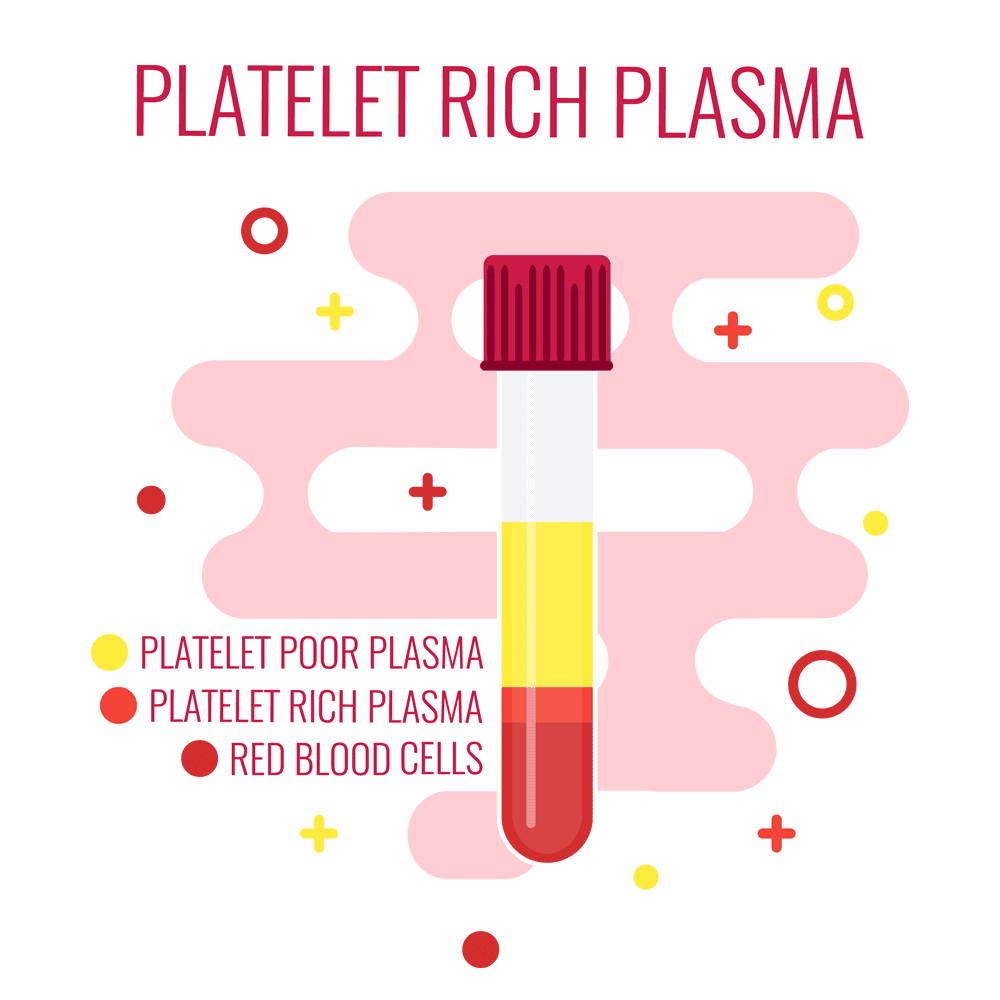
- There should always be a specific indication associated with a physical exam with confirmed imaging studies such as an ultrasound, CT scan, or MRI before treatment.
- Proper patient education and a discussion must be had with the patient, as well as a signed informed consent prior to the procedure.
- Contraindications must be reviewed prior to the procedure.
Graft Preparation
- The patient should be positioned in a comfortable seated or reclining position.
- Sterile single needles and syringes must be used with proper handling and disposal.
- Using an aseptic procedure, the proper amount of blood is then drawn from the vein for the PRP procedure.
- If the blood cannot be obtained from the site the first time, a new site must be used to prevent early activation.
- Using a sterile technique, transfer the tube of venous blood to the centrifuge. Platelet-Rich Plasma should be acquired using a separating device created for autologous blood. Preference is always given to a closed system that will prevent exposure of the blood and its cellular components to the open air, and permits minimal use of the tissue.
Image Guidance PRP Therapy
- Real-time imaging guidance using ultrasound, CT, or fluoroscopy should always be used when performing a PRP injection.
- If ultrasound is going to be used, the following considerations need to be decided in advance: For lengthy procedures, PRP injections near the spine, and intra-articular injections, sterile gel is recommended.
- Always use sterile probe covers. Cleansing the probe before and after the PRP procedures and observing sterile technique is sufficient.
- Guided images and indelible markings of the site of the probe position and the needle entry always need to be made before cleaning the skin where the probe and needle will be inserted.
- Always apply a bandage or a dressing after the procedure to protect the entry site from germs.
Post-Injection Care
- The patient should be monitored for any post-PRP procedure complications such as vaso-vagal reactions.
- Patients should be given post-procedure directions and precautions, and any questions should be answered before they leave. They should also have emergency contact information.
- Patients should be instructed about immobilization and any post-procedure activities that are allowed and/or not allowed.
- Post-PRP procedure pain prescriptions need to be given to the patient before discharge, and any questions about the medication(s) should be answered at this time. Patients also need to be instructed to avoid NSAIDs until they have healed, are pain-free, and have full function returned to the treated area.
- Per OSHA guidelines, contaminated areas must be disinfected before the next patient uses the room.
- The PRP procedure must be documented in detail, including a procedure note with the following information: date, pre- and post-procedure diagnosis, name of the procedure, physician/surgeon(s), any assistants, whether or not anesthesia was used and what type, short-term indication of the procedure, a description of the graft preparation, and a description of the procedure, including any/all guidance and instruments used.
Follow-up Care
- Patients are normally re-examined 2-6 weeks after the PRP procedure to follow up on pain, use, the injection site, and to discuss any concerns and future course of action.
- The patient response to the treatment should be recorded using authenticated outcome measures.
- Any complications, responses, and all other relevant information should be logged into the ICMS tracking system.
- Consideration for another PRP injection should be the center of the discussion, and the patient will be able to make a decision based on the outcome.
Safety Considerations
- Universal precautions must be used before, during, and after the procedure.
- Risk of infection: PRP is antimicrobial and provides effective protection against most bacterial infections except for Klebsiella, Pseudomonas, and Enterococcus.
- With the graft being made entirely out of autologous blood, it virtually eliminates the risk of disease transmission unless the graft becomes contaminated.
Risks to Patients from the Procedure
- Infection
- Bleeding
- Nerve damage
- Pain
- Lack of result
- Loss of limb and death (very rare)
Platelet-Rich Plasma: Indications
Musculoskeletal complaints require a complete history and exam to find a diagnosis. Often, diagnostic studies may be needed and reviewed to understand why prior treatments failed. PRP is usually considered an optional treatment for chronic and subacute conditions. Commonly, healing slows down or stops altogether at the 6-12 week period following an acute or traumatic injury. If the patient has not had any improvement for over the first six weeks, it’s probable the healing period has stopped.
Platelet-Rich Plasma: Contraindications
- Septicemia
- Platelet dysfunction syndrome
- Localized infection at the procedure site
- Hemodynamic instability
- Critical thrombocytopenia
- Patient not willing to take the risks involved with the procedure
Relative Contraindications:
- Regular use of NSAIDs within 48 hours of the PRP procedure
- HGB of < 10 g/dl
- Platelet count of < 105/ul
- Systemic use of corticosteroids within 2 weeks
- Recent illness or fever
- Cancer, particularly hematopoietic or bone
- HGB < 10 g/dl
- Platelet count < 105/ul
- Corticosteroid injection at the treatment site within 1 month
- Tobacco use
- Published in Corporate News / Blog
Platelet-Rich Plasma For Melasma — Will It Fade Forever?
For most women, a tiny pimple on the face is enough to ruin their day. Or week. Even the slightest imperfection that may have a 1% chance of getting noticed by others will freak them out. For these women, Melasma is their darkest nightmare. It’s a pretty common issue, a result of exposure to the sun, that causes brown patches on the face. Permanent patches, I should add.
If you’re suffering from Melasma, the road to “recovery” usually looks like this:
- You hope that it’ll fade away.
- Your friend suggests you try apple cider vinegar and lemon juice treatment.
- Slightly disappointed.
- You visit a dermatologist who’ll prescribe a bleaching cream (hydroquinone or similar).
- Full-on disappointment.
- You Google the hell out of the topic.
- Overwhelm.
- Concealers and makeup become your best friend.
At this point, no one can convince you there is a treatment for getting rid of melasma. Trying more and more treatments only runs the risk of making the condition worse. So what would you do?
What About Platelet-Rich Plasma For Melasma?
According to recent Turkish and Malaysian studies, Platelet-Rich Plasma is showing great promise for melasma. The one good thing about PRP for Melasma is the fact that PRP won’t make the condition worse unlike IPL, Fraxel, or other treatments. So that’s one of the treatments you can confidently try without worry. It’s like getting a natural facial treatment that has a whole lot of potential benefits even if it didn’t help cure melasma.
PRP injections work by supplying growth factors to reduce the pigmentation. And being an independent treatment with no downtime, it can be done in conjunction with conventional treatments for melasma to add and enhance the effects. There are more than 30 bioactive substances in Platelet-Rich Plasma that have separate roles like increasing skin volume and adding new blood vessels to name a few.
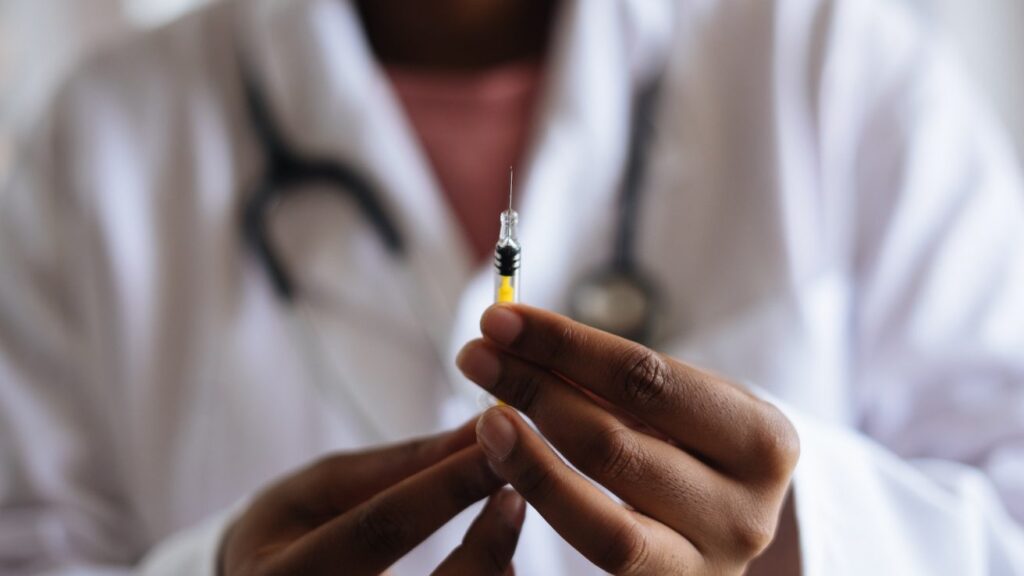
Platelet-Rich Plasma with Microneedling
This is the most common combination for Platelet-Rich Plasma therapy. Here’s a video of Dr. Michael Somenek performing a PRP injection on a patient of his immediately after microneedling. The combination is known to have produced results for a lot of varieties of skin pigmentation issues that it’d not be wise for anyone to ignore it for melasma, especially when creams and peels didn’t help. More important is PRP’s ability to stimulate collagen production in the area so it tightens the pores and makes your skin glowing.
Why Platelet-Rich Plasma?
PRP is primarily a healing vehicle. It needs to be injected into the membrane below the skin. The way it works is by supplying the underlying skin membrane with collagen and tenascin stimulated by the transforming growth factors in PRP. These growth factors also promote the formation of new blood vessels that in some cases results in the disappearance of spider veins.
The released growth factors (mainly platelet-derived growth factor (PDGF), epidermal growth factor (EGF), vascular endothelial growth factor (VEGF), fibroblast growth factor (FGF), and transforming growth factor-beta (TGF-ß)) can stimulate the proliferation of fibroblasts and epidermal cells, and collagen synthesis. In addition, the transforming growth factor-beta (TGF-ß) has been proven to inhibit melanogenesis — or reverse skin pigmentation — the exact opposite effect of exposure to UV-B radiation.
Typically, patients see excellent results with 2-3 PRP injections in the first 3 months. And clinical studies have shown that it will maintain after 6 months. However, Melasma is known to recur even after successful treatments. So you must take precautions against it by using sunscreen with broad-spectrum protection and an SPF of 30 or higher. And avoid skincare products that are harsh as they can exacerbate melasma.
- Published in Corporate News / Blog
Platelet-Rich Plasma For Melasma — Will It Fade Forever?
For most women, a tiny pimple on the face is enough to ruin their day. Or week. Even the slightest imperfection that may have a 1% chance of getting noticed by others will freak them out. For these women, Melasma is their darkest nightmare. It’s a pretty common issue, a result of exposure to the sun, that causes brown patches on the face. Permanent patches, I should add.
If you’re suffering from Melasma, the road to “recovery” usually looks like this:
- You hope that it’ll fade away.
- Your friend suggests you try apple cider vinegar and lemon juice treatment.
- Slightly disappointed.
- You visit a dermatologist who’ll prescribe a bleaching cream (hydroquinone or similar).
- Full-on disappointment.
- You Google the hell out of the topic.
- Overwhelm.
- Concealers and makeup become your best friend.
At this point, no one can convince you there is a treatment for getting rid of melasma. Trying more and more treatments only runs the risk of making the condition worse. So what would you do?
What About Platelet-Rich Plasma For Melasma?
According to recent Turkish and Malaysian studies, Platelet-Rich Plasma is showing great promise for melasma. The one good thing about PRP for Melasma is the fact that PRP won’t make the condition worse unlike IPL, Fraxel, or other treatments. So that’s one of the treatments you can confidently try without worry. It’s like getting a natural facial treatment that has a whole lot of potential benefits even if it didn’t help cure melasma.
PRP injections work by supplying growth factors to reduce the pigmentation. And being an independent treatment with no downtime, it can be done in conjunction with conventional treatments for melasma to add and enhance the effects. There are more than 30 bioactive substances in Platelet-Rich Plasma that have separate roles like increasing skin volume and adding new blood vessels to name a few.
Platelet-Rich Plasma with Microneedling
This is the most common combination for Platelet-Rich Plasma therapy. Here’s a video of Dr. Michael Somenek performing a PRP injection on a patient of his immediately after microneedling. The combination is known to have produced results for a lot of varieties of skin pigmentation issues that it’d not be wise for anyone to ignore it for melasma, especially when creams and peels didn’t help. More important is PRP’s ability to stimulate collagen production in the area so it tightens the pores and makes your skin glowing.

Why Platelet-Rich Plasma?
PRP is primarily a healing vehicle. It needs to be injected into the membrane below the skin. The way it works is by supplying the underlying skin membrane with collagen and tenascin stimulated by the transforming growth factors in PRP. These growth factors also promote the formation of new blood vessels that in some cases results in the disappearance of spider veins.
The released growth factors (mainly platelet-derived growth factor (PDGF), epidermal growth factor (EGF), vascular endothelial growth factor (VEGF), fibroblast growth factor (FGF), and transforming growth factor-beta (TGF-ß)) can stimulate the proliferation of fibroblasts and epidermal cells, and collagen synthesis. In addition, the transforming growth factor-beta (TGF-ß) has been proven to inhibit melanogenesis — or reverse skin pigmentation — the exact opposite effect of exposure to UV-B radiation.
Typically, patients see excellent results with 2-3 PRP injections in the first 3 months. And clinical studies have shown that it will maintain after 6 months. However, Melasma is known to recur even after successful treatments. So you must take precautions against it by using sunscreen with broad-spectrum protection and an SPF of 30 or higher. And avoid skincare products that are harsh as they can exacerbate melasma.
- Published in Corporate News / Blog

